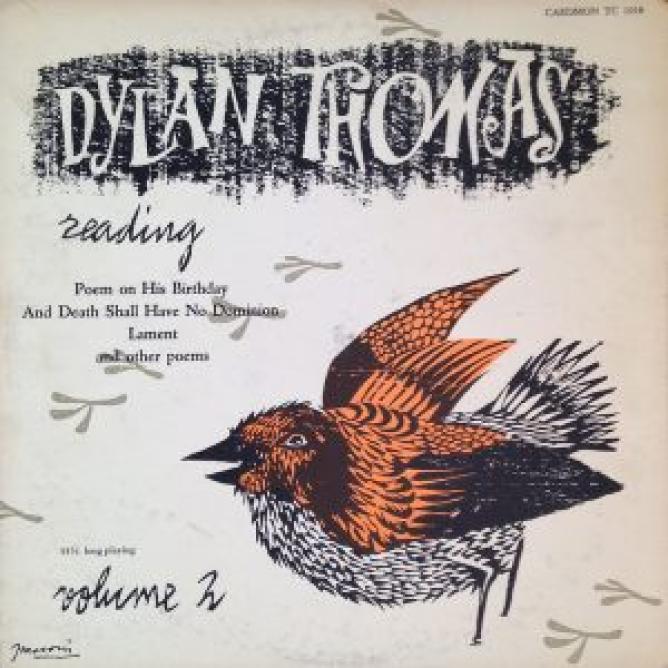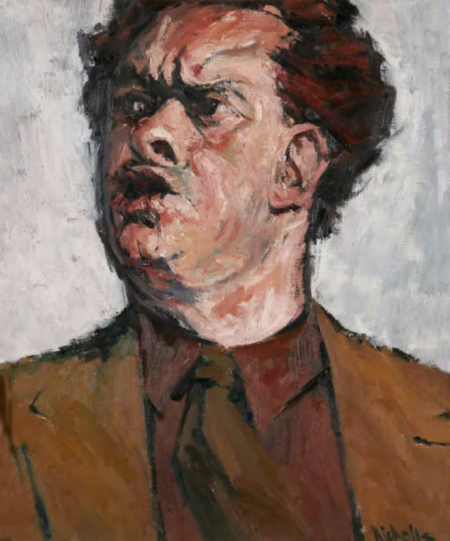
One of the most famous people to regularly walk through our doors over the past 140+ years is renowned Welsh poet Dylan Thomas. After having some of the best poems published in his lifetime including “Do Not Go Gentle Into That Good Night,” “Fern Hill” and “And death shall have no dominion,” the White Horse Tavern became a go-to destination for the poet during his tours of the United States.
The White Horse Tavern is famous for being where Dylan Thomas had his last drinks before his untimely death just a few days after turning 39. His poetry was so unique that it’s hard to be put into a specific genre, as he never aligned with a specific group or movement in literature.
Thomas wasn’t even a fan of being called a Welsh poet since he didn’t know how to read the language, according to a letter to Stephen Spender who reviewed his Collected Poems book. No matter what you deem Dylan Thomas, he’s an iconic figure amongst poets and literature enthusiasts even to this day.

The most well known of poems by Dylan Thomas is “Do Not Go Gentle Into That Good Night” that was first seen in Botteghe Oscure, which is a journal that was published in 1951. This was a few years after Thomas first wrote the poem in 1947, taking the form of a villanelle featuring five stanzas with three lines each and a single stanza with four lines at the end.
The title line, which is the first in the poem and gets repeated three times throughout, is said by the narrator to speak to their dying father about resisting the urge to pass away. And the Good Night portion of the line itself is representative of eternal sleep, which is one of the many euphemisms for death.
This is further evidenced by the poem’s second-most famed line: “Rage, rage against the dying of the light.” The word “rage” is the exact opposite of “gentle” and instead of a rage of anger, “Do Not Go Gentle Into That Good Night” speaks to the guttural instinct one should take to prevent themselves from dying.
This applies to the wise men, good men, wild men and grave men referenced in the other stanzas in the poem.

The Dylan Thomas poem “Fern Hill” got published in the October 1945 issue of Horizon magazine and was the last poem in the 1946 book Deaths and Entrances. It speaks to the poet’s younger days when he stayed extensively with his aunt Annie and her husband Jim Jones on a farmhouse called Fernhill that sat on 15 acres of land.
The thoughts of Thomas age as the lyrical styling of the poem moves on, with the first stanzas coming from the perspective of his younger self. That’s why “Fern Hill” starts off with a positive and almost idyllic view of the home and the land surrounding it mentioning aspects like the apple boughs, the starry night sky & the daisies.
As the poem moves on, his older voice takes over looking back on his youth with a sense of mourning and reminiscence. His more mature perspective also took note of how his childhood shielded him from the reality of death, stripping the farm of its Garden of Eden-like memories as seen in the last lines of the poem:
Oh as I was young and easy in the mercy of his means,
Time held me green and dying
Though I sang in my chains like the sea.
“And death shall have no dominion” is one of the earlier poems written by Dylan Thomas and the title of this one pays homage to the St. Paul’s epistle to the Romans (6:9) from the New Testament of the Bible. After forming a friendship with grocer and poet Bert Trick, he persuaded Thomas to get the poem published, which resulted in the New English Weekly printing it in May 1933.
This work was one of the essentials in Dylan Thomas’s second volume of poetry called Twenty-five Poem that was published in 1936. Along with this poem, the volume spoke on his personal beliefs about religion in general along with the forces of nature.
When reading or hearing “And death shall have no dominion,” you’ll find that all three stanzas start and end with the title line. You can also take notice of the poem’s symbolism that focuses on death and how it doesn’t hold power over mankind because all people are reunited with nature upon their passing.
Each stanza speaks on a different phase of life and death, with the overall tone showing how people can achieve victory over death even as it occurs.


In the last three years of his life, Dylan Thomas took multiple tours of the U.S. to read poetry and make money during a time when the U.K.’s economy was struggling after World War II.
The fourth tour of the U.S. would tragically be the last for the poet, who arrived on October 19, 1953 to read from his play “Under Milk Wood.”
Dylan Thomas was a frequent patron of The White Horse Tavern and drank heavily many-a-night at our New York City pub. During his last days on November 3 of the same year, Thomas claimed to have drunk a total of 18 straight whiskeys at our establishment (proclaiming that he set the record) before going back to his room at the Chelsea Hotel.
At this time, the poet was seriously ill to the point where he was getting injections to treat his ailments. Two days after setting his whiskey drinking record, Thomas fell into a coma and never woke up, succumbing to what was said to be brain swelling caused by pneumonia.
The legacy of Dylan Thomas and the story of his final days helps our bar remain one of the premiere NYC tourist attractions even to this day.
